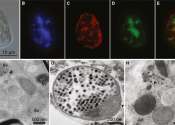Researchers develop program to read any genome sequence and decipher its genetic code
Yekaterina "Kate" Shulgina was a first year student in the Graduate School of Arts and Sciences, looking for a short computational biology project so she could check the requirement off her program in systems biology. She ...









